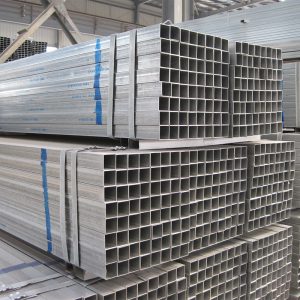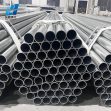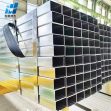How to look at powder coating for steel pipe
What is powder coating?
Powder coating is the application of dry powder paint to black steel pipe for surface protection. In normal wet paint application the coating is suspended in a liquid carrier that evaporates into the atmosphere leaving the coating protecting the surface. A powder coated part is cleaned and the powder coating is electrostatically charged and sprayed onto the object to be coated. The object is then placed in an oven where the powder coating particles melt to form a continuous film.

As it is well acknowledged, powder coating is another important surface treatment for steel pipe in a mill besides hot dipped galvanization of hot dipped galvanized steel pipe. Technically, thermoset powder coating is applied the same way as thermoplastic powders. Unlike thermoplastic, thermosets go through a chemical cross-linking reaction that is non-reversible when baked. This cross-linking changes the physical properties of the plastic, typically hardening them into a solid coating. Some thermosets have the ability to withstand temperatures of over 1,000 degrees Fahrenheit and can compete with the best high temperature enamel paints. Thermosets cure harder than thermoplastics, and as some of these thermosets harden, they also become brittle, especially in thicker coats.
Typically, purchasers and steel pipe manufacturers examine overall costs and potential coating complexity when deciding which type is most appropriate for their application. In each of the two classifications, there are a variety of sub-groups, and each individual powder is engineered for specific finish qualities. Generally speaking, two basic types of powder coating plastic finishes are available: thermoplastic and thermoset. Thermoplastics are synthetic materials that can be formed multiple times. High temperatures can melt thermoplastics, which is beneficial for reforming and recycling them but not ideal for situations where a part might be exposed to intense heat. However, several thermoplastics used as powder coats are favored for their wear- and chemical-resistance.
For example, steel conduit provides very good protection to enclosed conductors from impact, moisture, and chemical vapors. When powder coated items are installed without damage to the powder coating and they are maintained regularly, they should be relatively permanent. The correctly applied coating, although not metallurgically bonded to the metal will not crack, chip or peel as with conventional paint films. Once installed, maintaining the initial appearance of a powder coating is a simple matter. The soot and grime which builds up on surfaces from time to time contains moisture and salts which will adversely affect the powder coating and must be removed. Powder coatings should be washed down regularly (at least once each 6 months in less severe applications and more often in marine and industrial environments). The coating should be washed down with soapy water — use a neutral detergent — and rinsed off with clean water.
Tel: +86 18202256900 Email: steel@fwssteel.com










